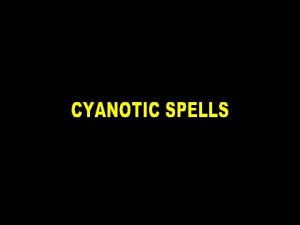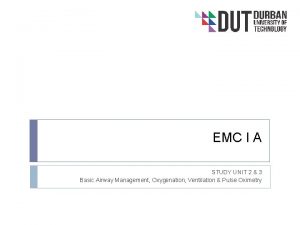Hearing Loss in Infants with Hypoxic Ischemic Encephalopathy

- Slides: 1

Hearing Loss in Infants with Hypoxic Ischemic Encephalopathy Ayman Khmour 1, Kim Hunter 1, Allison Knutson 1, Krishna Kumar 2 1 Children’s • • • INTRODUCTION Hearing loss (HL) is common in infants with hypoxic-ischemic encephalopathy (HIE) with incidence as high as 7% in recent reports. This study aims to define the incidence of HL in infants subjected to therapeutic hypothermia for moderate or severe neonatal HIE at hospital discharge and at follow up before 24 months. METHODS Retrospective cohort study of neonates receiving therapeutic hypothermia for moderate or severe hypoxic-ischemic encephalopathy. Factors associated with HL in HIE were previously identified in literature: use of ECMO; severity of HIE; length of mechanical ventilation and use of ototoxic medication. All neonates with HIE received Auditory Brainstem Response (ABR) screening prior to discharge, if the patient passed, then follow up testing at 6 months and older. If the patient failed ABR screening, a diagnostic ABR was done at 4 -6 weeks post discharge. Survivors were seen in the neurodevelopmental follow-up clinic. • • • Mercy Hospital, Kansas City, Missouri 2 UMKC School of Medicine RESULTS Those who were seen for at least one visit were included in this cohort. Seventy-four (74) patients with therapeutic hypothermia, 59 (80%) survived to discharge. Among survivors: ECMO was used in 4% (2/59). Twenty-seven percent (27%) with severe HIE (16/59). Mean length of mechanical ventilation 5 days (0 - 43, ± 7) and 36/59 received Gentamicin for more than 48 hours. Six (6) patients failed hearing screen at discharge (10%). Multivariate logistic regression did not correlate failing hearing screen at discharge with any of the identified risk factors. Fifty-two out of fifty-nine (52/59) survivors had at least one neurodevelopmental follow before 24 months. Five of six (5/6) patients who failed hearing screen at discharge did pass subsequent hearing screening before 24 months. One (1) patient lost to follow up. Three (3) different patients failed hearing screen before 24 months but only 1 out of 52 (2%) had sensory-neuronal hearing deficit; the other 2 patients had a conductive hearing deficit. CONCLUSION • In this cohort; 10% of infants with HIE treated with hypothermia failed hearing screen at discharge but sensory-neuronal hearing loss before 24 months was lower than what has been previously reported in the literature. • This supports the speculation that therapeutic Hypothermia for infants with HIE may have a protective role on the cochlea and subsequent hearing outcome. • More patients were identified with HL with subsequent testing. This underscores the importance of repeated hearing screen and follows up in this high-risk group CREDITS/DISCLOSURE/REFERENCES 1. 2. 3. 4. 5. 6. AJNR Am J Neuroradiol. 2008 Oct; 29(9): 1789 -94. doi: 10. 3174/ajnr. A 1188. Epub 2008 Jul 3. Is there a way to predict outcome in (near) term neonates with hypoxic-ischemic encephalopathy based on MR imaging? Liauw L, van der Grond J, et al Charlene MT Robertson, MD FRCPC 1 and Max Perlman, MBBS FRCPC 2. Pediatric Child Health. 2006 May; 11(5): 278– 282. Follow-up of the term infant after hypoxic-ischemic encephalopathy Am J Perinatol. 2008 Aug; 25(7): 435– 441. Published online 2008. Effects of Hypoxic-Ischemic Encephalopathy and Whole-Body Hypothermia on Neonatal Auditory Function: A Pilot Study Arch Pediatr Adolesc Med. 2011 Aug; 165(8): 692 -700. Whole-body hypothermia for term and near-term newborns with hypoxic-ischemic encephalopathy: a randomized controlled trial. Jacobs SE, Morley CJ, et al Pilot evaluation of the population pharmacokinetics of bumetanide in term newborn infants with seizures. Jullien V, Pressler RM, Boylan G, Blennow M, Marlow N, Chiron C, Pons G; NEMO Consortium Neonatal Seizure Treatment With Medication Off-Patent. J Clin Pharmacol. 2016 Mar; 56(3): 284 -90. Assessment of hearing organ activity in a group of neonates with central nervous system impairment. Widziszowska A, Namyslowski G. Int J Pediatr Otorhinolaryngol. 2011 Oct; 75(10): 1280 -4. Epub 2011 Aug 2.

